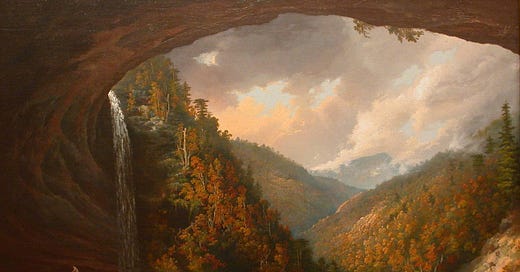What is Vertical Speech in the Works of the Inklings?
The Inklings use words to allure the reader to the silence around the words – not to get the message across.
Quoting Max Picard from The Worlds of Silence, Peter Kreeft says that in modern writing, words have lost their vertical static quality:
The architecture of the Hebrew language is vertical. Each word sinks down vertically, column-wise, into the sentence. In language today we have lost the static quality of the ancient tongues. The sentence has become dynamic; every word in every sentence speeds on quickly to the next … each word comes more from the preceding word than from the silence and moves on more to the next word in front of it than to the silence.
In modern writing, words are used primarily as communication tools. People use words to get their message across. This type of speech is message-driven, not meaning-driven.
You look for words just to move the reader along as quickly as possible from one word to the next horizontally. Words are whips to get the reader going.
The Inklings use words vertically, not horizontally.
For them, each word is alive.
Each word speaks through a particular sound shape – and needs to be heard.
The Inklings use words to allure the reader to the silence around the words – not to get the message across. As Treebeard said:
You must understand, young Hobbit, it takes a long time to say anything in Old Entish. And we never say anything unless it is worth taking a long time to say.
To use words vertically means to find words that make the reader spellbound for a second or two. Preferably longer.
Like a piercing line of poetry, they make you stop breathing the air of the world and plunge into a meditative reverie as you breathe in the fragrance from beyond the walls of the world.
For example, the chapter about Lothlórien in LOTR is just as extraneous as the chapter on Tom Bombadil.
But it’s a fine example of vertical speech that introduces the reader to the perilous realm of Faerie.
The effect of entering the realm of the Lady is such that all the company feels the presence of some inexplicable magic.
For some, it is a delight. For some, it is torment.
Tolkien suggests that the whole land was Galadriel’s mirror – not just the stone mirror itself. As the fellowship walked through the enchanted wood, they saw their secret thoughts and desires revealed as if in a mirror.
Some liked it; some hated it. But they couldn’t hide from it.
In this chapter, Tolkien stops the reader from wondering about what’s going to happen next. There’s no “next” in Lothlórien. It’s all now.
Frodo felt he was, is, and will always be here. The unfading beauty of the enchanted wood made time irrelevant, and Frodo stepped out of the world as if walking in Valinor of old.
Sam was standing puzzled and finally said, “This is more Elvish than anything. I feel as if I was inside a song, if you take my meaning.”
Haldir, the leader of the Elves, smiled, “You feel the power of the Lady of the Galadrhim.”





